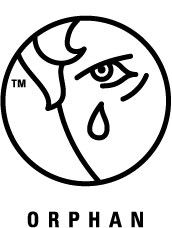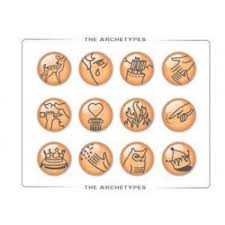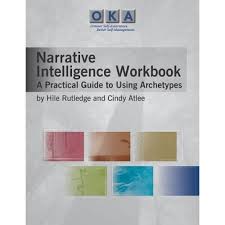OKA Resilience Series #4
Does your story have a happy ending–will you let it?
If resilience is the ability to bounce back, to endure and/or to come through difficult times better off for the struggle, that means that there is a happy ending to the story, or at least to that chapter of it.
Archetypes are the stories we are living–the internal, largely unconscious narratives that give our lives, our roles, our interactions meaning and context. Narrative Intelligence is the field of study and practice that brings archetypes to the forefront and makes them accessible. Someone with good Narrative Intelligence understands her guiding archetypes and their impact and can even influence the story within which she is living. This kind of Narrative Intelligence and a critical component of resilience.
To maintain their form and cohesion, stories have a narrative structure and logic–so when you live within a story your motives come from the logic of that structure and the people around you slip into the “roles” they must have to maintain that narrative’s logic. However, while the story needs to remain within a given narrative arc, any story can have a fulfilling (happy) or diminishing (sad) tone or ending. All stories allow for either tone, and the ability we each have to bend our stories toward the happy ending reflects our resilience. Resilient people do or can live happy stories.
There are many–arguably countless–archetypes, and each gives us a gateway to resilience. As examples, let’s take a quick look at three common archetypes:
 The Warrior Story — Also referred to as the Hero or Heroine story, this is a narrative of struggle and challenge. This is the tale of marshaling forces and fighting the dragon. That dragon may be a goal, an opponent, an demon (real or imagined). The warrior within us is energized and defined by the struggle. Because the Warrior’s story is about struggle, however, the narrative could just as easily contain a loss as a win–both are consistent to the Warrior’s tale. Resilient people believe they will (or at least can) win, and the Warrior’s narrative brings them feelings of strength and power. People lacking resilience tend to live out Warrior stories of loss–the dragon wins and they are left feeling powerless and impotent. This is a sad ending, but also a perfectly logical Warrior narrative.
The Warrior Story — Also referred to as the Hero or Heroine story, this is a narrative of struggle and challenge. This is the tale of marshaling forces and fighting the dragon. That dragon may be a goal, an opponent, an demon (real or imagined). The warrior within us is energized and defined by the struggle. Because the Warrior’s story is about struggle, however, the narrative could just as easily contain a loss as a win–both are consistent to the Warrior’s tale. Resilient people believe they will (or at least can) win, and the Warrior’s narrative brings them feelings of strength and power. People lacking resilience tend to live out Warrior stories of loss–the dragon wins and they are left feeling powerless and impotent. This is a sad ending, but also a perfectly logical Warrior narrative.
The Caregiver Story–This is a tale of nurturing, care and concern–of giving to and caring for dependents in need. The happy Caregiver story is one of willing sacrifice within which those the Caregiver wraps in his nurturing embrace receive the care with acknowledgment and gratitude. There is also a Caregiver’s story that ends poorly–this is the story of the caregiver who has no one to care for or protect–or someone who repeatedly ignores or brushes aside the nurturing they receive. Resilient Caregivers have and keep people in their lives who receive this loving care–the Caregivers are sustained and reinforced in their giving. Caregivers lacking resilience are alone–living within a story defined and driven by caring and nurturing they are not allowed to give.
 The Orphan–The Orphan narrative is the story that teaches us about the sharp edges and dangers of the world. People take advantage of you. Pain happens; setbacks occur, and people will leave you. The more you face these facts, the more prepared you will be for a world that can be harsh. This sounds a bit gloomy (which the Orphan tale can be), but it is the wisdom of this narrative that gives us endurance, grit and the callouses we need to survive in a world that often meets us with indifference (at best). The happy Orphan story (although we often don’t frame it that way) is one in which we band together with other people who have also made it through the fire. We join, we congregate, we share the bond that can only be had by those who have suffered the same way or see the world through the same lenses. The unhappy Orphan story is one in which the Orphan is alone–truly abandoned–and his or her reality (which comes in the form of a gripe or complaint) is never heard or acknowledged. Resilient Orphans find like-minded people and through connection with this group, draw strength (and resilience) in the grit and life experience they hold in common. Orphans lacking resilience are mere victims, and the toxicity of their victimhood–drip, drip, drip–continues to erode their ability to bounce back and come through a challenge to a more positive place.
The Orphan–The Orphan narrative is the story that teaches us about the sharp edges and dangers of the world. People take advantage of you. Pain happens; setbacks occur, and people will leave you. The more you face these facts, the more prepared you will be for a world that can be harsh. This sounds a bit gloomy (which the Orphan tale can be), but it is the wisdom of this narrative that gives us endurance, grit and the callouses we need to survive in a world that often meets us with indifference (at best). The happy Orphan story (although we often don’t frame it that way) is one in which we band together with other people who have also made it through the fire. We join, we congregate, we share the bond that can only be had by those who have suffered the same way or see the world through the same lenses. The unhappy Orphan story is one in which the Orphan is alone–truly abandoned–and his or her reality (which comes in the form of a gripe or complaint) is never heard or acknowledged. Resilient Orphans find like-minded people and through connection with this group, draw strength (and resilience) in the grit and life experience they hold in common. Orphans lacking resilience are mere victims, and the toxicity of their victimhood–drip, drip, drip–continues to erode their ability to bounce back and come through a challenge to a more positive place.
The more I am asked to address resilience–the existence of it and the building of it–the more archetypes and Narrative Intelligence become tools I draw upon. The Pearson-Marr Archetype Indicator (PMAI) is a unique and compelling tool that helps us identify within what archetypes we are most immersed–what stories we are living. To many’s surprise resilience is not linked to some narratives and not others, but rather in the tone (happy or sad) of any given story. Allowing your story to arc toward the empowering, happy ending is a critical key to resilience.
To learn more about archetypes and their use, you can read OKA’s Narrative Intelligence Workbook (an e-book) by Hile Rutledge and Cindy Atlee. Also join us in person for OKA’s one-day Narrative Intelligence workshop (October 23, 2014)– an interactive introduction to this great model and tool. Click either image below for more details.



Leave a Comment